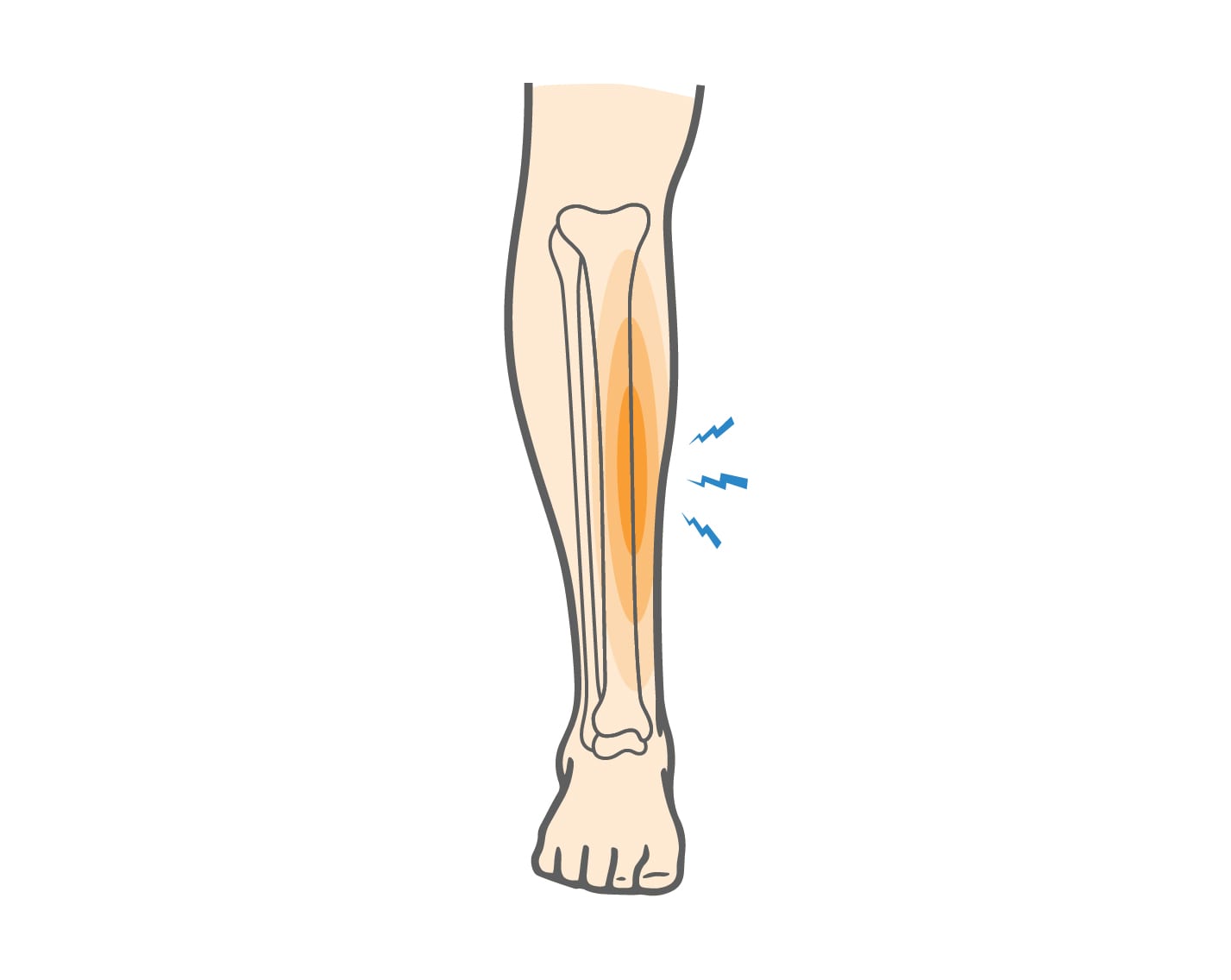Shin splints, also called medial tibial stress syndrome, is pain and inflammation along the inside part of the lower leg. Two bones make up the lower leg: the tibia on the inside and the fibula on the outside. Together, they are referred to as the shin bones. Shin splints occur when the muscles and other tissues around the tibia become inflamed. Shin splints are associated with vigorous and repetitive sports activity.
Shin Splints Causes, Symptoms & Treatment Options
Shin splints, also called medial tibial stress syndrome, is pain and inflammation along the inside part of the lower leg. Two bones make up the lower leg: the tibia on the inside and the fibula on the outside. Together, they are referred to as the shin bones. Shin splints occur when the muscles and other tissues around the tibia become inflamed. Shin splints are associated with vigorous and repetitive sports activity.
Overview
Overview

What causes Shin Splints?
Shin splints is an overuse injury caused by too much force being placed on the muscles around the tibia, which becomes inflamed. This injury frequently occurs after starting or increasing physical activity, such as a running or exercise program. Shin splints are associated with sports that require quick starting and stopping, such as racket sports and running.
Shin splints are most common in these sports:
• Tennis
• Racketball
• Dancing
• Running
• Soccer
• Basketball
Symptoms
Sharp or dull pain on the inner part of shin is the primary symptom associated with shin splints.
Specific, common symptoms may include:
• Pain that is diffuse (not limited to one focal point)
• Pain that gets worse with activity
• As the condition progresses, pain that occurs earlier in an activity and with less activity
• Pain that can last after the activity is over, then resolves on its own with rest
When to see a doctor
Symptoms of shin splints can mirror those of other conditions, such as stress fractures. If you notice localized tenderness or swelling in your shin or you have difficulty with weightbearing, you should see your doctor. It is important to receive an accurate diagnosis so that you can get proper treatment. To make a diagnosis, your doctor will obtain a medical history and conduct a physical examination. X-rays and other imaging tests may be ordered to see if you have a stress fracture or to rule out other causes of your symptoms.
Non-operative treatment
Shin splints can generally be treated at home with rest and simple treatments. Athletes should avoid sports that aggravate their symptoms. Consult with your doctor about substituting these with activities that place less stress on the shins, such as swimming, so that you can stay active. Other conservative treatment options include:
• Icing for 15 minutes, two or three times daily, especially after activity
• Calf stretches
• Nonsteroidal anti-inflammatory drugs (NSAIDs), such as ibuprofen and naproxen, to relieve pain
• Orthotic shoes that provide arch support
• Physical therapy to build flexibility and muscle strength
Try these exercises to help address your condition:
Below is a PDF of the Exercise Program
Surgical Treatment
Surgery is not needed to treat shin splints.
Recovery
Generally, a full recovery from shin splints takes about four to six weeks. Athletes should be pain free before they return to play, and should resume their normal activities at a lower level of intensity so that they can build up strength. Proper stretching, appropriate shoes, and correct form and training will help prevent future shin splints. Your doctor and physical therapist can guide you through recovery so that you can resume your sport.
GET BACK TO WHAT YOU LOVE. FASTER
Sources
https://orthoinfo.aaos.org/en/diseases–conditions/shin-splints/
https://viewmedica.com/vm/index/brochure/68/shinsplints/en
https://www.webmd.com/fitness-exercise/shin-splints#1
https://www.sportsmedtoday.com/shin-splints-va-32.htm
https://www.mayoclinic.org/diseases-conditions/shin-splints/symptoms-causes/syc-20354105
https://www.healthline.com/health/shin-splints
Frequently Asked Questions
Where is shin splint pain located?
The pain settles along the shinbone, often creeping just behind it or clinging to the inner edge of your lower leg. It’s a stubborn companion after intense workouts, sports, or repetitive pounding. You might feel it throbbing on the front, the outer ridge, or even where the leg meets the ankle.
What comes after shin splints?
Most shin splints fade with care, but ignoring them? That’s playing with fire. Keep running or jumping on angry shins, and those tiny cracks in the bone—stress fractures—can start to form.
Do shin splints improve?
Yes—with patience. A few weeks of rest, ice, stretching, and more innovative training usually dull the pain. But “better” doesn’t mean invincible. Listen to your body; it’s smarter than any workout plan.
Is it bad to ignore shin splints?
That front-of-shin agony? It’s not just soreness—it could be a stress fracture whispering warnings. Brushing it off risks turning a minor setback into a major halt. Get it checked early. Rest isn’t surrender. It’s a strategy.

